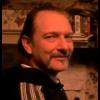This is a very good direction for pursuit. It is also being approached obliquely by nano.
It appears that there is a kind of alteration possible of the cyrstalline formation possible by altering quantum realtionships at the subatomic level that may achieve this same result without the overt pressure containment necessity.
There have been a few different articles to this effect from a variety of sources. One such follows and I will start scanning the Nanotech Realities listings for some others but don't hesitate to post the relavent ones waiting for me. In fact I have to dissappear for a while again.
 http://www.nature.co...1/020101-1.htmlNew state of matter made
http://www.nature.co...1/020101-1.htmlNew state of matter made
Physicists have created a patterned liquid.3 January 2002
PHILIP BALL

Supercold atoms trapped in a laser mesh.
© Nature
Physicists in Germany have made a new type of matter by trapping globules of an unusual liquid in a regular array of dimples. They call their creation a patterned fluid.
Simply trapping a normal fluid wouldn't transform it - water in the wells of an egg carton is still water. Immanuel Bloch of the Ludwig-Maximilians University in Munich, Germany, and coworkers worked with something far more bizarre: a quantum liquid1.
Such liquids exist only at very low temperatures, when atoms' thermal jiggling quietens down enough for them to reveal their wave-like properties.
Bloch's team started with a quantum liquid called a Bose-Einstein condensate. This is a vapour of a hundred thousand or so rubidium atoms confined to a small volume by a magnetic field and cooled to just a few billionths of a degree above absolute zero (-273 °C).
All the atoms in a Bose-Einstein condensate behave like a regiment of soldiers on parade. They are said to be coherent, acting like a single giant particle. One consequence of this is that the vapour becomes a superfluid - if it moves, it does so en masse. A superfluid has no viscosity because you can't slow down one atom without slowing them all.
The researchers placed this superfluid in an optical lattice - the interference pattern between several laser beams. The atoms moved easily around the lattice's 150,000 valleys - as if water were to flow up and over the mountains from lake to lake.
As the optical lattice was made more intense - deeper valleys and higher peaks - there came a point where the fluid got stuck. It ceased to be a superfluid, and the localized blobs of rubidium vapour were no longer coherent with one another.
Mott - just
This trapped state is called a Mott insulator. A similar effect can occur in an electrically conducting substance such as a semiconductor, which can be transformed to an insulator if the lattice of atoms becomes too disorderly. The British physicist Nevill Mott first discovered this effect in the 1960s.
The transition is reversible: if the strength of the optical lattice is reduced, the Bose-Einstein condensate reappears. The sharp change between a coherent condensate and a non-coherent Mott insulator state is loosely analogous to a kind of freezing. A better comparison is the way a magnet can become non-magnetic when heated.
But heat plays no part in the change in the quantum fluid - it is driven by Heisenberg's uncertainty principle. This stipulates that when atoms get trapped in particular valleys, they must lose their coherence. Their wave-like quantum state is no longer like the rippling surface of a single ocean - instead it is like many independently rippling little lakes.
References
Greiner, M., Mandel, O., Esslinger, T., Hansch, T. W. & Bloch, I. Quantum phase transition from a superfluid to a Mott insulator in a gas of ultracold atoms. Nature, 415, 39 - 44, (2002).















































